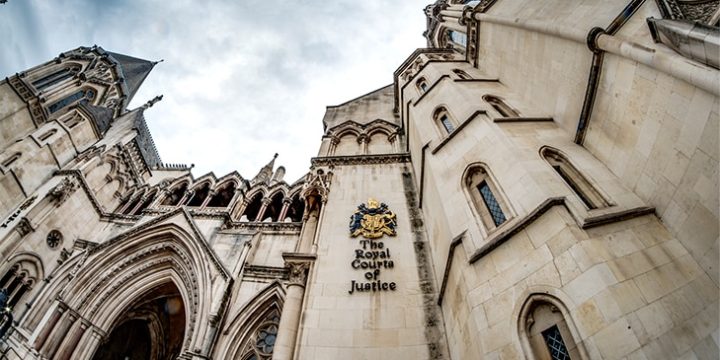News & Insights
Judicial Review: Avoiding the pitfalls and legal challenges of public sector decision-making
Article by Damian Greenfield, tCI Associate & Stakeholder Engagement Lead, National Highways
When exercising their statutory duties, developers and public sector bodies alike often have to make difficult decisions, ranging from planning applications to regulatory decisions that can have a significant impact on the stakeholders they serve.
Within the context of law, there are set requirements for how decisions can be made, and when they are met we can all enjoy that ‘high five’ moment following a public consultation, when a challenging or controversial proposal receives approval. However, the endorsement of any proposed change isn’t always the final hurdle – interested parties still have the legal right to challenge any decision through the courts if proposed changes aren’t favoured by individuals and communities.
No organisation wants to bear the expense and uncertainty of challenges in courts and tribunals, despite any decisions being legally challenged by way of an appeal and, failing that, a judicial review, the most common grounds that public consultations face in regard to legal challenges will be little surprise to anyone who has been working in the field.
The first is complaints that claimants haven’t been consulted when they had a legitimate expectation to be consulted. This tends to be in circumstances where a promise or reference of consultation has been made or there is an established practice of consultation, where it would be conspicuously unfair not to consult.
The second most common ground is where there had been a breach of legitimate expectation of proper consultation. This encompasses everything about the idea that if you are doing a consultation, it must be done properly in accordance with common law. Simply put, this is where public consultations will fall short on the grounds of the Gunning Principles. In addition, one issue that has risen to the top of the consultation agenda in recent times is equalities, something borne out by the fact that this is the third most frequent ground in consultation judicial reviews with the vast majority of cases alleging breaches of the Public Sector Equality Duty from s.149 of the Equality Act 2010.
Statutory duties to consult form the fourth most common ground, most often claimants alleging they were guaranteed consultation by statute or regulation and no consultation took place including specific methods of consultation (e.g., environmental cases), which we have in recent years seen a significant increase in, tend to fall under this category.
On the grounds of Gunning, probably the most well-known element of the law of consultation is Gunning 2, the duty to give ‘sufficient information to give intelligent consideration’. Complaints that consultees have not been given enough information to adequately comment on have been a consistent issue over the years whereby a consultor had omitted key facts directly related to the subject matter or information about how consultors arrived at their options.
Public consultations and judicial reviews are important processes for ensuring that decisions are made in a transparent and accountable manner and that the interests and opinions of all stakeholders are considered. This means that you should familiarise yourself with the legal and procedural requirements, including the Gunning Principles that apply to your situation, and make sure that you are complying with them as any misstep may make a proposal vulnerable to a legal challenge that results in expensive delays if the case ends up in the High Court and those early celebrations quickly turning sour.
So how do you make sure you’re not just operating lawfully, but in line with good practice? The best way to minimise the threat of a judicial review is to make sure that you are following the law and any relevant procedures by adhering to the following:
Being transparent, inclusive, and provide clear and accessible information: Ensure that the consultation process is open and transparent and that all stakeholders are given the opportunity to participate and provide feedback. Transparency is an important principle in public decision-making. By being transparent about your decision-making process, you can help to build trust and confidence and help to prevent misunderstandings or misinterpretations. This means that you should provide clear and accessible information about your proposal and the reasons for your decision, including the rationale behind it and the potential impacts as well as any relevant evidence or data that you relied on.
Consult and engage, early and effectively: If you are making a decision that could affect other people or organisations, it is a good idea to consult with those stakeholders early in the process, so that they have sufficient time to review and provide feedback on the proposal or decision. This can help you to identify any potential issues or concerns that they may have and address any issues before they become more serious. Ensure that any public consultation is conducted in an accessible and effective manner, such as through multiple channels (e.g., online, in-person, etc.) and in multiple formats and languages. By consulting with stakeholders, you can also demonstrate that you have considered their perspectives and taken them into account when making your decision.
Document and demonstrate your evidenced-based decision-making process: If you are making a decision that could be subject to a judicial review, it is important to document your decision-making process that is based on robust evidence and analysis and that this evidence is made publicly available. This means that you should keep a record of all the information that you considered when making the decision, as well as the reasons for the decision that you ultimately made. By documenting your decision-making process, you will be better able to demonstrate that you acted lawfully and in accordance with the relevant procedures.
Review your decision-making process and be responsive to feedback: It’s a good idea to periodically review your decision-making process to ensure that it is working effectively and efficiently. This can help you to identify any areas where you may need to make changes or improvements. Consider all feedback received during the consultation process, and where appropriate, make changes to the proposal or decision to address the concerns raised.
So, when you’re next undertaking any form of public consultation exercise – make sure you double-check what you’re actually doing by following the law and relevant procedures. However, if you are unsure about the principles and practices of public consultations, you may want to consult with a legal professional before you find yourself in a position where you are having to legally defend a decision you have made. The Consultation Institute is on hand to advise you throughout the entire consultation and decision-making process and support you to mitigate the risk of a judicial review. Help prevent misunderstandings and disputes and demonstrate that you are acting lawfully and in the best interests of the public by speaking with a member of the team by emailing us or by calling 01767 318 350.
About the author
Damian Greenfield, Associate, The Consultation Institute & Stakeholder Engagement Lead, National Highways
Damian is a Stakeholder Engagement Lead at National Highways, which plans, designs, builds, operates, and maintains England’s motorways and major A roads. He is also an Associate at The Consultation Institute, specialising in creating and delivering stakeholder engagement and public consultation strategies, developing stakeholder insight, and identifying, and mapping stakeholders across the public sector with a special focus on transport.




